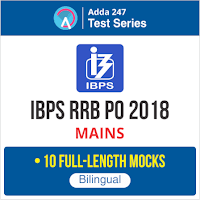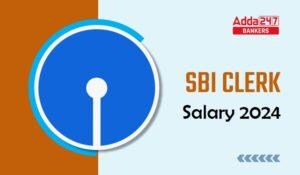Directions (1-5): Study the information and answer the given questions:
Eight persons P, Q, R, S, T, U, V and W are sitting around a circular table. Some of them are facing inside the center while some are facing outside the center. Persons who face inside the center like some cities and persons who face outside the center like some games. P likes badminton and sits second to the left of V. Only two persons sit between V and the one who likes Goa. W who likes a game is not an immediate neighbour of V and P. The one who likes Goa is not an immediate neighbour of P. S sits third to the left of the one who likes archery. U likes Ladakh and sits third to the left of V. One person sits between R and the one who likes tennis. One of the Person likes Jaipur. W sits second to the right of the one who likes archery. Q sits third to the right of the one who likes Tennis. The one who likes cricket sits second to the right of the one likes Shimla.
Q1. Who among the following sits immediate right of the one who likes archery?
(ii)- S sits third to the left of the one who likes archery. W sits second to the right of the one who likes archery. W who likes a game is not an immediate neighbour of V and P. The only possibility- the one who likes archery sits opposite to V in case-1 and sits second to the right in case-2. One person sits between R and the one who likes tennis. Q sits third to the right of the one who likes Tennis. In case-1: S likes tennis and in case-2: there are two possibilities either S or V likes tennis. The one who likes cricket sits second to the right of the one likes Shimla. One of the Person likes Jaipur. By using these conditions case-2 will be eliminated and in case-1, V likes Shimla and R likes Jaipur. The final arrangement is-
Q2. How many persons sits between T and the one who likes Tennis when counted in anticlockwise direction with respect to T?
(i)- By using given conditions, P likes badminton and sits second to the left of V. Only two persons sit between V and the one who likes Goa. There are two possible cases. V faces either inside or outside the center. The one who likes Goa is not an immediate neighbour of P. U likes Ladakh and sits third to the left of V. That means U an immediate neighbour of P.
(ii)- S sits third to the left of the one who likes archery. W sits second to the right of the one who likes archery. W who likes a game is not an immediate neighbour of V and P. The only possibility- the one who likes archery sits opposite to V in case-1 and sits second to the right in case-2. One person sits between R and the one who likes tennis. Q sits third to the right of the one who likes Tennis. In case-1: S likes tennis and in case-2: there are two possibilities either S or V likes tennis. The one who likes cricket sits second to the right of the one likes Shimla. One of the Person likes Jaipur. By using these conditions case-2 will be eliminated and in case-1, V likes Shimla and R likes Jaipur. The final arrangement is-
Q3. Who among the following faces the one who likes Jaipur?
(i)- By using given conditions, P likes badminton and sits second to the left of V. Only two persons sit between V and the one who likes Goa. There are two possible cases. V faces either inside or outside the center. The one who likes Goa is not an immediate neighbour of P. U likes Ladakh and sits third to the left of V. That means U an immediate neighbour of P.
(ii)- S sits third to the left of the one who likes archery. W sits second to the right of the one who likes archery. W who likes a game is not an immediate neighbour of V and P. The only possibility- the one who likes archery sits opposite to V in case-1 and sits second to the right in case-2. One person sits between R and the one who likes tennis. Q sits third to the right of the one who likes Tennis. In case-1: S likes tennis and in case-2: there are two possibilities either S or V likes tennis. The one who likes cricket sits second to the right of the one likes Shimla. One of the Person likes Jaipur. By using these conditions case-2 will be eliminated and in case-1, V likes Shimla and R likes Jaipur. The final arrangement is-
Q4. Who is an immediate neighbour of both R and the one who likes Goa? (a) the one who likes Cricket (b) S (c) U (d) P (e) the one who likes Archery
(i)- By using given conditions, P likes badminton and sits second to the left of V. Only two persons sit between V and the one who likes Goa. There are two possible cases. V faces either inside or outside the center. The one who likes Goa is not an immediate neighbour of P. U likes Ladakh and sits third to the left of V. That means U an immediate neighbour of P.
(ii)- S sits third to the left of the one who likes archery. W sits second to the right of the one who likes archery. W who likes a game is not an immediate neighbour of V and P. The only possibility- the one who likes archery sits opposite to V in case-1 and sits second to the right in case-2. One person sits between R and the one who likes tennis. Q sits third to the right of the one who likes Tennis. In case-1: S likes tennis and in case-2: there are two possibilities either S or V likes tennis. The one who likes cricket sits second to the right of the one likes Shimla. One of the Person likes Jaipur. By using these conditions case-2 will be eliminated and in case-1, V likes Shimla and R likes Jaipur. The final arrangement is-
Q5. Who among the following sit opposite to the one who sits 2nd right of V?
(i)- By using given conditions, P likes badminton and sits second to the left of V. Only two persons sit between V and the one who likes Goa. There are two possible cases. V faces either inside or outside the center. The one who likes Goa is not an immediate neighbour of P. U likes Ladakh and sits third to the left of V. That means U an immediate neighbour of P.
(ii)- S sits third to the left of the one who likes archery. W sits second to the right of the one who likes archery. W who likes a game is not an immediate neighbour of V and P. The only possibility- the one who likes archery sits opposite to V in case-1 and sits second to the right in case-2. One person sits between R and the one who likes tennis. Q sits third to the right of the one who likes Tennis. In case-1: S likes tennis and in case-2: there are two possibilities either S or V likes tennis. The one who likes cricket sits second to the right of the one likes Shimla. One of the Person likes Jaipur. By using these conditions case-2 will be eliminated and in case-1, V likes Shimla and R likes Jaipur. The final arrangement is-
Directions (6-8): Study the information carefully and answer the questions given below.
P + Q means P is Sister of Q
P - Q means P is brother of Q
P x Q means P is Wife of Q
P & Q means P is Mother of Q
P ÷ Q means P is of Father Q
Q6. In the expression A - C × B ÷ D, how is A related to D?
Q7. In the expression E x A ÷ K − F & N, how is N related to E?
Q8. Which of the following expressions shows that R is mother of T?
Directions (9-10): Study the following information carefully and answer the given questions:
E, F, G, H, I and J are six family members. E and F are a married couple. I is sister of H. F is daughter-in-law of J, who is grandmother of I’s brother. H is the only son of G, who is brother of E.
Q9. What is the relation of F with H?
Q10.How is G related to I?
Directions (11-15): Each of the questions below consists of a question and two statements numbered I and II given below it. You have to decide whether the data provided in the statement are sufficient to answer the question. Read both the statements and Give answer:
Q11. Who sits immediate left of M, if all persons sit in a row are facing north?
I. A sits third to the right of N. There is only three persons sit between N and M.
II. K sits second to the left of M. Not more than eight persons sit in a row.
Q12. Who amongst P, Q, R, S, T and U is the tallest person?
I. R is taller than S but shorter than only 2 persons. Q is shorter than P.
II. T is not as tall as U who is not the tallest.
Q13. How is A related to B?
I. A has only two children. C is sister of E. D is father in law of B
II. E is husband of B. A is married to D.
Q14. What is the code of ‘today’ in a certain code language?
I. ‘today bank sector’ is coded as ‘zq xr mz’ and ‘public today never’ is coded as ‘mz yq hn’
II. ‘today file send’ is coded as ‘xr mz zq’ and ‘email send today’ is coded as ‘zq mz am’
Q15. Six persons- J, K, L, M, N sitting in a row. Among them how many persons are facing to the north?
I. There are only two persons sit between J and K. M sits fourth to the left of J.
II. O sits immediate left of N but not an immediate neighbour of J.
You may also like to read:





 The Hindu Review October 2022: Download ...
The Hindu Review October 2022: Download ...
 IBPS PO Salary 2024, In Hand Salary, Per...
IBPS PO Salary 2024, In Hand Salary, Per...
 SBI Clerk Salary 2024, Latest Salary Sli...
SBI Clerk Salary 2024, Latest Salary Sli...



